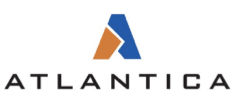Yesterday, Siemens Gamesa CEO, Jochen Eickholt, called for quotas on EU-made wind turbines to protect the industry from low-cost turbines from China. The announcement is timely as yesterday EU foreign ministers gathered to discuss economic competition and systemic rivalry with China. The protection mechanism mentioned by Eickholt may resonate well with ministers and diplomats in Brussels.
The request for support mentioned the rising cost of key materials such as steel and copper as well as supply chain disruptions, primarily targets imports of low-cost wind turbines from China. According to Eickholt, there is a risk that the wind turbine industry will end up like the solar panel industry where the market and the supply chains are dominated by Chinese manufacturers.
Without mentioning it explicitly, the call for protective measures sounds like a response to a tweet from the EU Commissioner for the Internal Market, Thierry Breton, less than a month ago. Commissioner Breton asked for an urgent, coordinated response from the EU against the US Inflation Reduction Act’s subsidies to the green transition.
EU local content is a no-go, quota system is tested and functioning
Given that the US Inflation Reduction Act includes incentive schemes for local manufacturing of offshore wind equipment, and that the UK directly finances the development of a local supply chain and has established the Supply Chain Plan which strongly emphasizes local content, it wouldn’t be very surprising if EU suppliers called for similar local content mechanisms. However, local content requirements tend to be difficult to justify in terms of the WTO and in regard to fair competition. And, fair competition is something that the EU Commission highly appreciates. In fact, in March, the EU brought the UK’s local content plans to WTO courts on the grounds that the UK was in breach of international competition regulations. So, to suggest local content as a support system would likely be met with a cold response in Brussels.
On the other hand, import quotas could fall within the boundaries of WTO agreements and fair competition regulations, and are already a tested and functioning mechanism in the EU system. The European safeguard on imported steel has been in place since 2018 (it was initially provisional and became definitive in 2019) to prevent dumping and promote the stability of the EU steel market. One could argue whether the safeguard has been effective at protecting European steel prices and steel manufacturers, but regardless, it is a system that cannot be immediately dismissed on legal grounds as could be the case for calls for local content requirements.
In that sense, a protective system such as a quota system could resonate with the EU Commission because 1) it does not necessarily violate WTO regulations, 2) it can operate as a counter-measure to UK and US protective schemes, 3) the EU can define the level of imports from selected countries including China, and 4) it ensures contracts at reasonable profit levels for European manufacturers and thus secures European industries and jobs.
Will the wind turbine market turn towards protectionism?
That being said, Eickholt’s call for support brings to light a few key admissions. First, the request indirectly admits that European wind turbine suppliers cannot compete on price against Chinese manufacturers. This comes as no surprise as this has been the case for many industries over the past 10-15 years, including steel.
Second, wind developers are unlikely to whole-heartedly support a wind turbine quota system, because in a tight market import restrictions will force them to pay higher prices for a limited amount of domestic supply. The offshore wind market is extremely tight and likely to remain so in the foreseeable future.
Thirdly, Eickholt argues that if Europe is serious about energy independence and wind power, turbines should be considered critical and strategically important infrastructure and be supported accordingly. China has limited imports of wind turbines, and the UK and the United States are already pushing for “Made in UK” and “Made in USA” labels. If the EU goes down the same path, the wind turbine market could soon be heading towards regional markets and protectionism.
It remains to be seen how this will affect the execution of the current offshore wind project pipeline in the EU, in context of the region’s 60 GW offshore wind target by 2030, and 300 GW by 2050.
In today’s market where European turbine suppliers are facing low and even negative margins, a call for support is understandable. Suppliers face increasing competition from China with financial backing from regional or national sources and are eager to enter ever narrowing global markets such as in the UK and the United States.
For a wind turbine manufacturer losing out on a wind turbine contract not only means loss of revenue over the next one to four years, but also loss of revenue over the next 10-20 years from aftermarket services and replacements. In other words, the stakes are high.


















































































